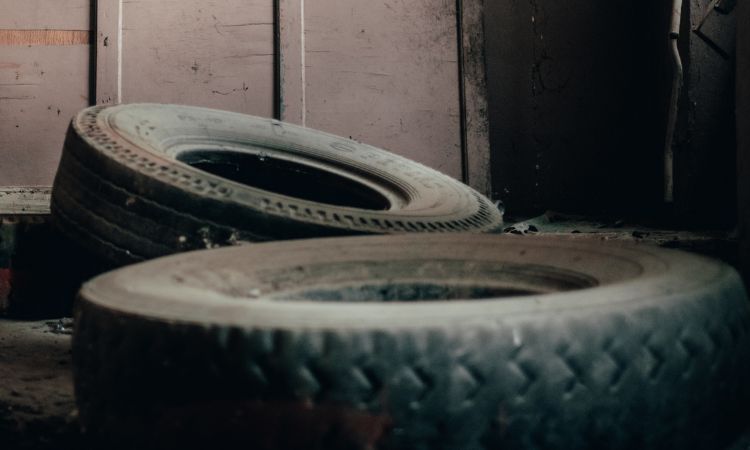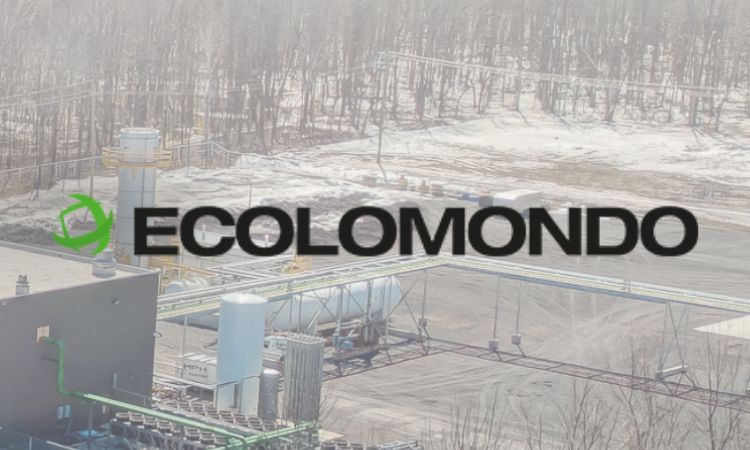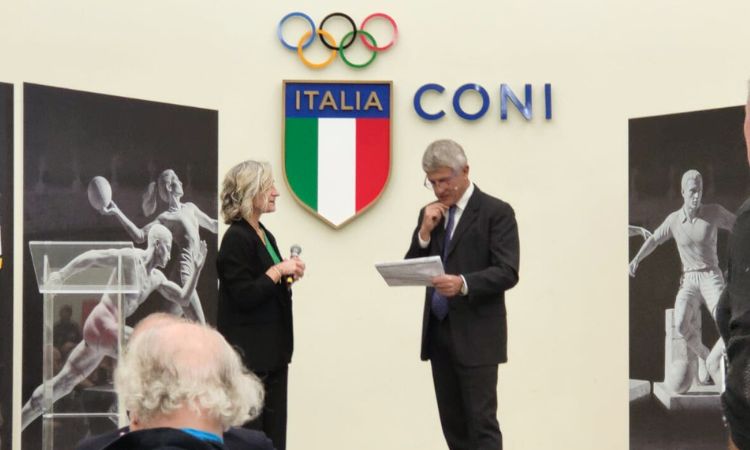German AZuR commissioned feasibility study on end-of-life tire recycling
The innovation forum "Scrap Tire Recycling" (AZuR) sponsored by the Federal Ministry of Education and Research of Germany recently published a large-scale study for its partners. The study is focused on the market positions and requirements of end-of-life tire recyclers and manufacturers of products from recycled tire rubber.
Below, we are citing the original article published on the website of AZuR in May 2021. To read the original text in German, please proceed to AZuR’s website.
Upon the completion of the study AZuR reports that in close cooperation with the Technical University of Chemnitz, the feasibility study has created a solid basis for the further development of a sensible, ecological and economical tire cycle.
In the foreground, the study by Dr.-Ing. Stefan Hoyer, who works at the Institute for Lightweight Structures at Chemnitz University of Technology, analyzes the current state of the disposal of end-of-life tires and new feasible use cases for the recycled tire-derived materials. A comprehensive compilation of relevant data and interrelationships now creates more transparency in the rather obscure market of end-of-life tire recycling products. With this study, the network partners of the “Scrap Tire Recycling” innovation forum (AZuR) will benefit in particular from a wide range of information and the latest research results on the market, technical and regulatory challenges and new recycling materials, and will also receive objective recommendations for action. With this knowledge, the doors for new business models should now be open.
Status quo and challenges in the end-of-life tire market
AZuR says the overall situation in the end-of-life tire market is precarious due to the drastic decline in the energetic recovery of used tires in cement plants, regulatory hurdles, lack of acceptance of recycling products, caused by the barely objective discussion of harmful substances, a low price level in the raw material markets and redistribution deficits in disposal fees. These deficits contribute significantly to the fact that large quantities of end-of-life tires are still illegally disposed of and landfilled. Added to this, disposal costs and exports continue to rise.
How many end-of-life tires are there and where do they end up?
“The current situation does not allow an exact accounting of the amount of used tires. There are only registration obligations for waste disposal companies, which only have to submit the figures to the competent authority upon separate request. Accordingly, all upstream and downstream actions with used tires by the disposal companies are generally not accounted for, ”summarizes Dr.-Ing. Stefan Hoyer. The available data do not allow an exact calculation of the amount of used tires or even the individual disposal routes, even with the greatest care. Especially when converting the figures of the National Association of the Tire Industry in Germany – Bundesverband Reifenhandel und Vulkaniseur-Handwerk eV (BRV) – for new tire business from piece to mass, the conversion factors have a very strong influence on the result, AZuR says.
Discussing optimization potential, Dr.-Ing. Stefan Hoyer says: "To improve the accuracy of this calculation model, it should be checked whether the determination of the current mean weight of end-of-life tires for different types of such tires would be appropriate."
According to Hoyer, such measures would help trace illegal deposits. However, this is not legally possible without further ado, that is why politicians are also called upon to bring order to the balance sheet for the amount of used tires.
Regulations on the PAH content and other substances in recycled tire rubber.
Polycyclic Aromatic Hydrocarbons (PAHs), which are practically always present in tires and today mainly come from the important filler carbon black, are carcinogenic and harmful to the environment – but only if they are released and become bioavailable! However, according to Dr.-Ing Stefan Hoyer's international studies and his own expertise, the release of such substances is hardly possible. The actual release, in the form of migration or emissions, is usually well below the relevant limit values.
AZuR highlights that in fact, one could think more about the steak from the charcoal grill, because here too there are tons of PAHs that get into the body when eating. Nevertheless, the pure PAH content is still the measure of all things today. And whether this limit value is adhered to is often just a question of the measurement method. The further development cannot be fully predicted and in the worst case scenario could put the recycling of used tires under further pressure. However, if practice-relevant methods such as emissions or migration are used, it can be assumed that the lack of clarity about the PAH content will soon end.
However, tires contain an unmanageable number of other substances. Thus, there are also potential risks with regard to future regulations. Above all, high temperatures (> 180 ° C) or deformations as well as the discharge through water or dust during recycling are potential topics that should be addressed preventively by the industry. Therefore, interests and competencies should be bundled, also from politics and research, in order to break down barriers and prejudices on the subject of pollutants. In the opinion of ZARE, the introduction of a quality label would also be conceivable for companies that exclusively dispose of properly. In the end, however, it is above all the planning security of disposal companies and recyclers that is burdened in the long term by the current situation and inhibits many investments and developments.
Possible solutions for tire retreaders, TDF consumers, rubberized asphalt producers and tire recyclers
The feasibility study also offers possible solutions on the topics of retreading, maintaining the necessary capacities for incineration in cement plants, road construction and recycling
With a number of advanced technologies, tire retreading offers a lot of potential today. Know-how on silica mixtures and multicompound treads in combination with an objective comparison of quality with new tires, for example through a tire label, would be central issues for increasing acceptance. In addition, the maximization of the degree of automation, the constructive optimization of the carcasses with regard to the “retreadability” as well as better sorting of end-of-life tires could also be good possibilities for lowering the technical and economic hurdles, according to AZuR.
Incineration of tire-derived fuel (TDF) from end-of-life tires in cement kilns is declining as the costs are relatively high. AZuR reports that the expenditures associated with this kind of fuel are incomprehensible because from an energetic point of view, tires have an equivalent value of €300 per ton compared to natural gas or wood. The amount is shrinking mainly because new kilns with calciners are being introduced. Tires can only burn these if they have been pre-shredded to about 2.5 centimeters or made airworthy. But even then, the used tires will increasingly compete with other alternative fuels. Intensive coordination with the industry and, if necessary, targeted series of tests to identify the optimal pre-shredding would be helpful here in order to maintain the technically necessary capacities for incineration at financially acceptable conditions.
End-of-life tires can be used in road construction with many positive effects. Many technical problems, such as installation temperatures or delivery and storage behavior, have already been solved. The market in Germany was estimated at a maximum of 50,000 tons per year, but requires appropriate regulations as a basis for tenders in order to be accessible. Recycling of end-of-life tires into new recycled products also offers a wide range of options and growth opportunities. A large number of possible material combinations are discussed and evaluated in the report. A material database for possible material combinations could serve as a basis for evaluating new fields of application.
Overall, the study shows good options for action. “Now it is up to the responsible actors to lay the foundation for the conservation of resources and better value creation in the resource cycle - for us humans and our nature!” – the study says.
To learn more about the report, please proceed to the official website of AZuR.
About AZuR, the innovation forum for used tire recycling
The amount of end-of-life tires in Germany has been growing over the last decades, whereas the tire recycling market is in upheaval. To continue to fully recycle used tires as well as used rubber and at the same time reduce the amount of used tires - this is the ambitious goal of the Innovation Forum for Waste Tire Recycling, which is supported by the Federal Ministry of Education and Research within the framework of the funding guideline "Innovation Forums for Medium-Sized Enterprises". The objective is to initiate an interdisciplinary network of business and science in the field of innovation. The aim is to launch a cross-sectoral network of the various players from industry and science in the "used tire industry" in order to improve the conditions especially for SMEs, for example for new products, sales markets and the development of new business models. AZuR stands for Allianz Zukunft Reifen.
Press release by AZuR.
Weibold is an international consulting company specializing exclusively in end-of-life tire recycling and pyrolysis. Since 1999, we have helped companies grow and build profitable businesses.









